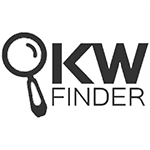An SEO campaign consists of a lot of moving parts. There are a number of things that require your attention, and it can seem pretty overwhelming at first glance.
When you break it down, though, it can get a lot simpler. The most fundamental distinction we can make when we’re talking about SEO is on-page vs off-page optimization. On-page SEO includes a lot of the actions you need to take as you’re just starting out.
We’re going to run through an on page SEO checklist in this article, giving you a clear idea of what it takes to have a great on-page campaign. Let’s get started:
Page Contents
The Ultimate On Page SEO Checklist

Our list is going to cover everything you need to know to start a successful campaign. We’re going to assume that you’re familiar with search engine optimization but might not have taken the time to research it too extensively.
With that in mind, let’s take a look at the first thing you have to understand when you’re starting out.
The Perspective of the Search Engine
Before you get started with your on-page SEO, it’s important to get yourself into the right frame of mind. In other words, you have to understand where search engines are coming from before you can adequately meet the expectations of the algorithm.
Failing to understand the search engine can lead to penalties, no traffic, and disappointment. Search engines have established methods of weeding out sites that are trying to “over-optimize” or act in ways that are contrary to their code of conduct.
It’s important to conceptualize search engines like any other business. They’re trying to provide the best product or service to their customers in hopes that they can beat out the competition. If their results aren’t up to par, they’ll lose traffic to other search engines.
So, remember that search engines want what their users want. Site owners often get lost in the hype of optimization and forget that the guiding principle should be to make your site more valuable to customers.
As you start to refine your website and adjust different factors to try and rank, remember that any hit to the actual quality of your content will negatively affect your rankings in the long run.
Quality always beats out over-optimization. User experience is everything, so you have to consider things from their point of view. Even things like page speed will affect your rankings.
Now that we’ve got that out of the way let’s take a look at some of the most essential points of on-page SEO.
1. Identify the Most Valuable Keywords
Almost all optimization gravitates around the keywords that you select. Selecting a keyword isn’t as simple as thinking about what you think would be the most relevant.
It’s essential that you do significant research to identify keywords that have high traffic and manageable competition. There are a lot of ways that you could potentially do this, and most of them require the use of a few extra tools.
Let’s take a look at a couple of great keywords research tools:
Google Search Console

The Google Search Console is a free tool that Google provides to you. It allows you to examine how your various posts are doing and which keywords are bringing in the most traffic.
This effectively takes all of the guesswork out of optimization and gives you insight into your traffic from the search engine itself. You can also submit a sitemap to their team and have them examine it for flaws.
You should certainly set your account up if you haven’t already.
Google Analytics

Google Analytics offers you a similar amount of insight but might go a little bit deeper in terms of analyses of your traffic. You can use Analytics to find new and useful keywords, as well as get reads on other sites that are using those keywords.
Finally, you can monitor the volume of users that are finding your site and leaving immediately. This is called your “bounce rate,” and a high one indicates that there’s something interfering with your user experience.
CMS Plugins

Many of you probably use WordPress as your content management system. Surely, there are others that offer SEO plugins as well.
WordPress certainly has a lot of these plugins and they can be an excellent aid in on-page optimization as it happens. Let’s take Yoast, for example.
When you’re using Yoast, you can enter in your target keyword and get an analysis of how well the post is optimized for that specific keyword.
Yoast allows you to go through the process of crafting a blog post or article naturally. Then, when you’re finished, you can look at their SEO analysis of your page. They give you clear language about the state of your optimizations.
If something is lacking, they tell you exactly how to improve it. Once you’ve made the adequate adjustments, you get the green light and can move on to publish the post. This is a nice feature because it’s tough to remember all of the key points of optimization as you’re making a post.
The Yoast plugin also embeds itself into the word processor so that you can get a read on your optimization as you’re working.
KWFinder

The last keyword research tool we’ll look at is KWFinder. This is an excellent tool as you start to sift through keywords because it’s free and gives you a large amount of information.
You can see the search volume of each keyword, check how difficult it will be to rank for, identify trends over time for that specific keywords, and get a rough take on how many visits you can expect if you optimize well.
2. Pay Attention to Your URL

Your URL may seem like something that doesn’t matter too much, but it’s a significant SEO factor.
You have the ability to adjust the URL of the post you’re making, typically through the word processor or content management system that you use. WordPress, for example, is one of the CMS programs that allows you to adjust your URL.
Ensure that the keyword you’ve optimized for is the first term in the URL. You’ll also want to make sure that you keep your URL very short. As long as you include the keyword and any other terms that are necessary, you should cut the URL length down as much as you possibly can.
URL length often correlates directly to the ranking you receive. Shorter URLs mean higher rankings. This could suggest that sites with shorter URLs are more in-tune with optimization best practices, but it’s still something to consider.
3. Add Keywords into Your Title

Your article title should include the target keyword. Additionally, you should try to place the keyword at the very front of the title if it works naturally.
If the keyword phrase doesn’t flow nicely as a stand-alone title, you should also add phrases or other keywords that make sense. Let’s use an example.
Say your keyword phrase is “Best Lasagna Recipes.” You could make that the title of your article, but it looks a little dry and there’s a chance that adding something to the end of the phrase could boost the amount of traffic you receive.
With that in mind, you could try something like “Best Lasagna Recipes on a Budget,” or “Best Lasagna Recipes for the New Chef.” The extension of these terms will spread the range of your search results to meet new audiences that wouldn’t see your post if you only used the keyword phrase in the title.
4. Use the Keyword in the Introduction
Before we discuss this point, remember that the use of keywords in the body text has to be natural. You can use the keyword phrase whenever it flows into the idea you’re writing about.
At the same time, make sure you’re not using the keyword phrase excessively or Google will take note and give you a penalty. It’s best to use your keyword phrase once within the first 150 words.
This is a pretty short amount of text to naturally fall into a very specific keyword, though. Use some forethought to make sure that your introduction is geared toward the keyword phrase and you’ll find that there’s usually a great opportunity to add it in.
5. Use Your Keyword in at Least One Header
Another keyword location that will boost rankings is the header. Most posts will include three or four headers to organize content.
For example, most posts include an H2 header after the initial introduction. There could be a high number of other H2 headers in the article, depending on the length of the post.
After those headers, you’ll likely include H3 and H4 headers as the content dictates. Generally, you should include the keyword phrase in one of your H2 headers because they indicate a higher level of importance.
If the article is lengthier, try and include the term in one of the smaller headers as well. Again, use the term in these locations when it feels most natural, but strive for at least one strong placement.
6. Include External Links
A well-optimized post will include a number of external links to highly respected sites. External links are those that start on your page and lead to a different website.
Links to highly respected sites suggest to Google’s algorithm that the information you’re using is based on trustworthy sources. When you’re trying to find sites to link to, just imagine that you are the reader.
What kind of information would help you to understand the content on the page? Are there any sites that have helped you a great deal? Those are the kind of sources that you should link to because they fit naturally into the post.
Always lean toward experts in your field when finding external links as well. Try your best not to use your keyword phrases as anchor texts for external links.
An anchor text is the section of words you use as the hypertext for your link. This is generally two to four words that reference the content of the article you’re linking to. Using keyword phrases as anchor texts is typically a bad sign to the search engine algorithm, as it indicates that you may be over-optimizing.
As a final note, try to include an external link in both the body and conclusion of your post.
7. Include Internal Links
Internal links are links that run from one page on your website to another. Internal links constitute the architecture of your content strategy and have a huge impact on user behavior.
Counter to what we said about external links, it’s a positive thing to use anchor texts in internal links.
You’ll want to use internal links to guide users toward pages on your website that hold value and can lead to conversions. A “conversion” is made whenever the user follows your site to do the thing that you want them to.
Making a purchase or downloading an e-book, for example, would count as a conversion. So, keep this in mind as you write your copy. A really well-placed internal link can guide a high percentage of a page’s traffic toward locations where they will make conversions.
Finally, try to balance out your internal and external links. Simply try to include the same amount of both in your post.
8. Make Sure Google Can Crawl Your Site

The term “crawl” refers to the search engine’s ability to move to your site and gather the information needed to use it in its search index.
The first thing that you can do to improve your site’s ability to be indexed is to check for any links that no longer work. Next, pop into the Google Search Console feature and try the “Inspect URL” tool.
This will let you know if your site is indexed and mobile-friendly. Next, go into Google Search Console’s “Coverage” feature and see if it alerts you to any blatant crawl errors on your page.
Want to Dig a Little Deeper?
Hopefully, this on page SEO checklist was helpful for the beginners out there. You might be in dire need of some deeper insights, though. We’re here to help.
Explore our site for more optimization and digital marketing ideas.

